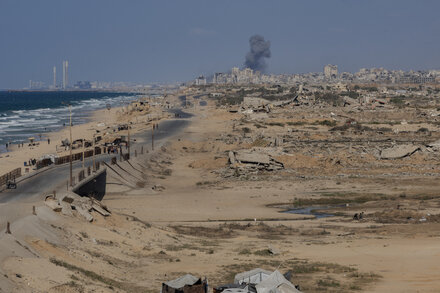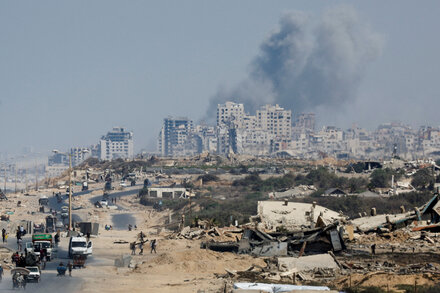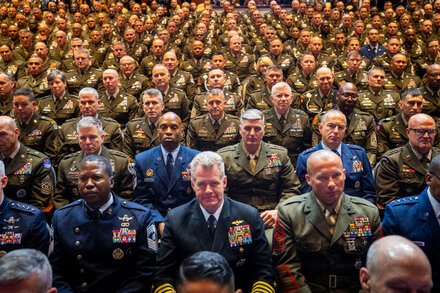Since the October 7 attacks, securing the release of hostages held by Hamas in Gaza has been a paramount concern, driving complex international diplomacy. While one significant exchange has occurred, numerous proposals for further deals remain stalled amidst ongoing challenges.

Efforts to secure the release of hostages held by Hamas in the Gaza Strip have been a central point of international diplomacy and a key demand from Israel since the October 7, 2023, attacks. The complex negotiations, often mediated by Qatar, Egypt, and the United States, have yielded one significant exchange and numerous ongoing, albeit stalled, proposals.
The November 2023 Truce and Exchange
The most substantial breakthrough in hostage negotiations occurred in late November 2023, resulting in a temporary ceasefire and an exchange of prisoners. This deal, brokered after weeks of intense diplomatic efforts, saw a halt in fighting for seven days.
Under the terms of the agreement:
- Hostage Releases: 105 hostages were released by Hamas, including 81 Israelis (predominantly women and children), 23 Thai nationals, and one Filipino citizen.
- Prisoner Releases: Israel released 240 Palestinian prisoners, primarily women and minors, from its jails.
- Humanitarian Aid: The truce also facilitated an increase in the flow of humanitarian aid, including food, water, medicine, and fuel, into the Gaza Strip.
The deal was implemented in phases, with hostages and prisoners exchanged daily. The process was often fraught with last-minute complications and delays, underscoring the fragile nature of the agreement.
Ongoing Negotiations and Key Sticking Points
Since the November truce, attempts to secure a more comprehensive hostage deal have continued but have faced significant obstacles. Mediators have presented various frameworks, often envisioning multi-phase agreements that would lead to the release of all remaining hostages in exchange for a larger number of Palestinian prisoners and a more prolonged, or even permanent, cessation of hostilities.
Key areas of disagreement include:
- Ceasefire Duration: Hamas has consistently demanded a permanent ceasefire as a prerequisite for any new deal involving a significant number of hostages, particularly male soldiers. Israel, conversely, has maintained its commitment to eliminating Hamas’s military capabilities and has resisted a permanent halt to operations before this objective is achieved.
- Exchange Ratios: The number and profile of Palestinian prisoners to be released in exchange for Israeli hostages remains a major sticking point. Hamas seeks the release of high-profile prisoners and a more favorable ratio.
- Hostage Status: The exact number of remaining hostages is subject to some variation, with estimates ranging around 130, though not all are believed to be alive. Hamas has held back detailed information on their condition.
- Israeli Troop Withdrawal: Hamas has also demanded the full withdrawal of Israeli forces from Gaza, a condition Israel has rejected as it would undermine its security objectives.
United States President Joe Biden has been a vocal proponent of a deal, stating in recent months:
“We have put on the table a proposal that would lead to a durable ceasefire and the release of all hostages. It’s up to Hamas now to accept it.”
Israeli Prime Minister Benjamin Netanyahu has reiterated Israel’s dual objectives:
“We are committed to returning all our hostages and to destroying Hamas’s military and governing capabilities. These goals are not contradictory.”
Qatari and Egyptian officials have continued to shuttle between the parties, attempting to bridge the deep divisions and find common ground for a humanitarian pause that could pave the way for a broader agreement.
The Stakes and Humanitarian Context
The push for a hostage deal is intertwined with the dire humanitarian situation in Gaza, where months of conflict have led to widespread displacement, famine warnings, and a severe shortage of essential supplies. The international community views a ceasefire, potentially stemming from a hostage agreement, as critical for allowing increased aid to reach the besieged population.
Families of the hostages in Israel have maintained immense pressure on the government to prioritize their return, with regular protests and campaigns advocating for a deal at any cost. The psychological and physical well-being of the hostages, some of whom have been held for nearly a year, remains a significant concern.
As negotiations continue, the path to a comprehensive deal remains uncertain, heavily dependent on the willingness of both Israel and Hamas to compromise on their core demands amid an ongoing conflict.
Source: Read the original article here.





